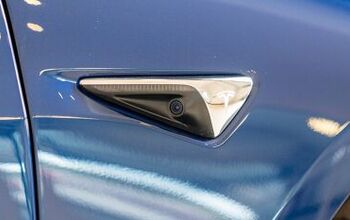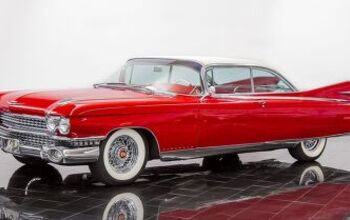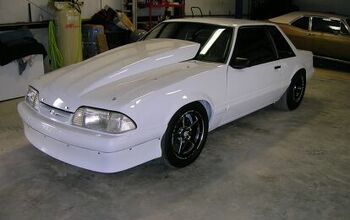Piston Slap: Playing Valve Roulette in a City Golf?

Hi Sajeev.
I have a 2007 Volkswagen City Golf with a 2.0-liter and a five-speed manual. It has about 60,000 kilometres (37k miles) and obviously doesn’t get driven very much. My independent mechanic suggested that the timing belt be changed because of the age of the car. He says it is an interference engine and bad things could happen if the belt breaks. I’ve read about others where this has happened, and the cost to fix it. I would like to get your opinion.
Sajeev answers:
Your man is right: why play valve roulette in an interference engine? Easy answer, so remember why timing belts go bad with age (and not mileage).
It’s the material: rubber.
Rubber rots over time; a wear item just like engine oil and items people refuse to change like shocks, headlight bulbs, etc…
Sure, you may not see the cracks, the hardening, the decreased performance as with a set of dry rotted tires. But it happens and the consequences are likely disastrous on a 2.0 VW mill. And a fully depreciated, low-mile City Golf is a good machine for basic transportation. In my time with the beautiful MK IV Jetta, I quite tolerated that motor’s performance to durability ratio, especially when including the joy of Fahrvergnügen in an affordable vehicle.
If yours isn’t too rusty and the rest of the machine is well maintained, do the timing belt.
[Image: Volkswagen]
Send your queries to sajeev@thetruthaboutcars.com. Spare no details and ask for a speedy resolution if you’re in a hurry…but be realistic, and use your make/model specific forums instead of TTAC for more timely advice.

More by Sajeev Mehta


































Comments
Join the conversation
To me this falls in the same category as tugging on Superman’s cape or spitting into the wind.
@juniperbug. My dad gave me his 2000 Concorde LXi in November. It has original timing belt ! Spoke to my mechanic , and he gave the same advice... I'm not worried about changing timing belt as car is only worth $2k tops, due to its age...mileage is low though, only had 30k miles!
I am facing a similar situation. My question to the B&B - what factors tend to lead to more rapid wear of the belt / a higher probability of belt breaking So far I have heard / read - extreme cold starts - extreme heat - operating in 100+ degrees regularly - oil leaking into area of belt Any others?
I had a timing belt break on my 1997 Ford Escort - considered myself lucky getting 90k out of that one. With the recommendation of the mechanic, I had the water pump replaced then as well. So as not to repeat the same mistake, I voluntarily had the timing belt and water pump replaced at the next 80k without incident. This is the new schedule for this vehicle as it continues to perform like a new car with Honduh-like quality (at a cost of $10k new). I can't think of a car I'd buy to replace this one - it is a manual - I love it - get over 45mpgs on the highway with it, and its paid for. It looks and drives like a new car. Even after considering finance charges on the vehicle, I don't think I've spent over $16k on it in the past 21 years.